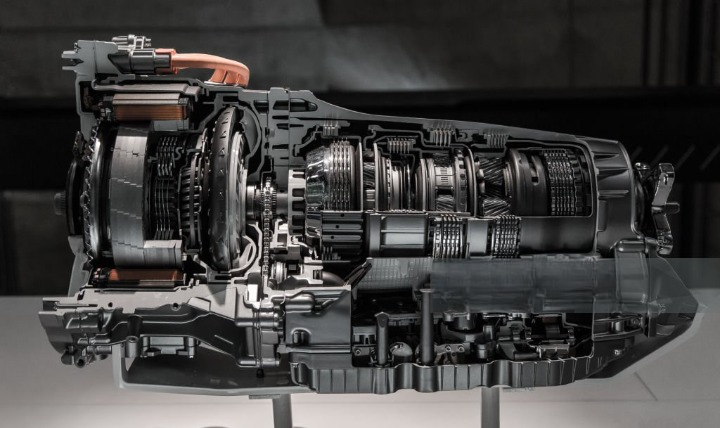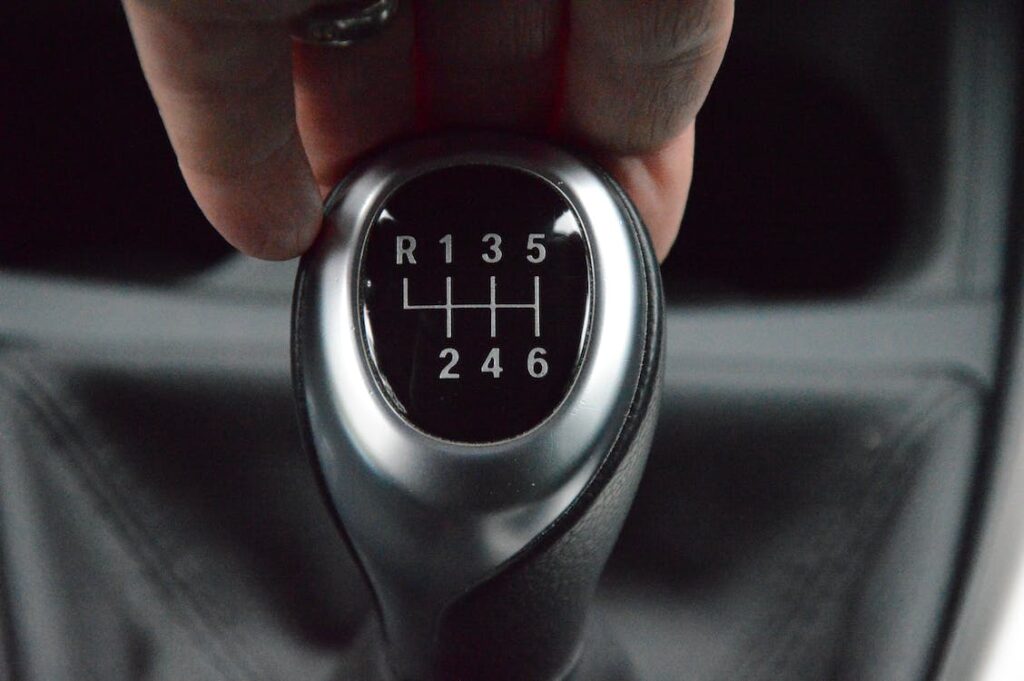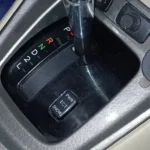Overview
Our cars will inevitably have a lot of unforeseen issues, like damage, engine failure, braking noise, etc.
Table of Contents
Among them, drivers are frequently puzzled by the problem that the shifter moves but doesn’t change gears. Driving a car in this kind of situation is not safe for you.
Do not be alarmed. We’ll explain why it happend and provide advice and way of what to do. To find out more information, continue reading this blog!
The Cause Why Shifter Moves But Doesn’t Change Gears
What causes the shifter to move but not shift gears? That is a question that requires clarification. Naturally, there are various reasons why vehicle problems arise, including loose wires or cables, improperly connected cables, and reduced fluid levels. Let’s look down for more information.

Unsecured Shifter Wire During Transmission
A cable connects the transmission sensor to the car’s shifter. The line must be fastened at both ends using bolts and nuts.
Additionally, if a length adjustment of the cable set is required, there is an adjuster at these points.
There was a kink in the shift cable beneath the internal gear selector.
Wear and an incision from daily movement might generate vibrations and loosen connectors.
These connectors could be readily shifted inside the tuning space rather than staying in their pre-planned location due to the reason above.
As a result, there’s a chance of shifting into the incorrect gear, the gear shifts freely, and the gears not switching.
Incorrect Shifter Cable
How does one use the shifter cable? The manual valve located in the valve body of an automatic transmission is connected to a single shift lever.
This explains why the shifter moves, yet the car remains in gear.
A flexible cable connects car transmissions and gearshifts. But this kind of wire is prone to deterioration, bending, stretching, and tearing over time.
There may not be a problem with the transmission if your automobile won’t start. A broken shifter cable could be the problem.
The gear lever is shifted from the switch position when we extend the cable.
For instance, an extension switch wire going from P to D in a car will show up on the panel as L, which stands for Low Gear, or N, which stands for Neutral.
The connection between the gearbox and the shifting link is severed if the cable shifter breaks.
If one or both cables are broken, the shifter handle cannot automatically return to neutral when it is not in gear. However, these circumstances are rare.
Reduce Transmission Fluid
A typical cause of “gear shift moves but car won’t drive” is a transmission fluid issue.
Whether you have an automatic or manual engine, this material is essential to its effective operation.
The gearbox’s moving parts are lubricated, and the transmission fluid reduces friction.
But transmission damage may also result from this liquid. Moving when it is contaminated and left in the car for an extended period of time will be challenging.
Additionally, your car will eventually break down.
What should I do if the gear shifter shifts but doesn’t change gears?
Make an effort to look into each of the causes listed above. You have inspected them, but your automobile still needs to start. Try checking the gearshift kit on your vehicle.

switching up
The test that you can take is this one:
The car should start first, and then the gearbox should gradually shift to P (park). Set the parking brake and transmission assembly. Press the parking brake.
Pull the lever to the letter R to shift into reverse, and simultaneously confirm that the reverse gear is engaged on the dashboard.
Make sure the reverse gear is engaged by breaking quickly, then begin backing up to see if the car reverses in response to your movements.
Lastly, run the identical test using N and D.
Can a Car Start When Its Shifter Cable Is Damaged?
Can a car with a damaged shifter cable be driven? Even if a car with a damaged gearbox can still move, we don’t advise going it.
Driving a damaged car on the road will put you and others in grave danger. For complete safety, you should take it to an auto repair shop.
You can’t comprehend the risks when the shifter is broken. The professionals must be consulted to make the best choice for your car. It’s up to you to shift into gear.
How to Shift an Automatic Transmission in a Car and Change Gears
The computer manages the automatic transmission to maintain the engine running at its ideal revolutions per minute (RPM).
The automatic transmission changes into a higher gear so that the motor spins more slowly when RPMs exceed the upper limits.
On the other hand, the engine will spin more quickly when the RPMs reach their lowest limit.
How to Change Out of Low Gear Using RPMs
To take over, do as follows:
- If your car is in “D,” let’s apply the brakes until it reaches 20 to 25 mph, then maintain a steady pace.
- Change to the number “2”.
- Reduce the speed slightly if the RPMs peak at 4,000 or 5,000.
- Proceed once more to switch to the “1”. Don’t forget to reduce your speed to between 10 and 20 mph.
- Consider moving out. It’s straightforward:
- Put your car in “1” and raise the RPMs to 3,000.
- Continue at that consistent pace and move to “2”.
- When the vehicle reaches 3,000 RPMs at “2,” shift to “D.”
When to Engage Low Gears
Haul Big Weights
Imagine hauling a heavy thing or moving a lot of cargo; you risk severely damaging the gears if you don’t use the low gear.- Based on their weight, they are designed to function without a hitch.
- Scale An Incline
The same as before, something terrible could happen to your machine. The vehicle is pulled upward by gravity, which loads the engine. Therefore, always remember to shift into a lower gear when climbing a slope. - Go Down a Hill in Style
There’s no doubt that you brake heavily when driving down a hill. This unintentionally brake puts a lot of load or pressure on the car’s engine, which can damages it. - Put your car in low gear and let the brake pedal drop. The force is then partially absorbed by the pistons to slow down.
Change When You’re Ready
An automatic transmission system’s primary function is to shift for you. In certain situations, you must move the transmission into a lower gear.
Shifting gears quickly and at the appropriate moment will improve your driving.
FAQs
How Can An Automatic Gear Shifter Get Loose?
I have a loose gear shift. How,can it be fixed? Quite simple if you follow these steps in given order.
- Analyze the references.
- Unfasten the bolts and nuts.
- Use the thread locker.
- Press the gear button.
- Take out the gear that holds the circle.
- Secure the nuts and bolts.
When your car refuses to shift gears, what’s wrong?
If something goes wrong, the system in your car may exhibit several indications. They frequently make humming noises, the gear changes become less seamless, jerk all the time, or stop altogether.
You will require a replacement gear shifter when this occurs. It’s also possible that the car’s mechanical components failed to function as intended.
Diagnosing the symptoms of a defective manual transmission cable can be more difficult. Replacing the wires in Trailblazers and Envoys requires work; first, the centre console must be removed by pulling out the carpet.
An automatic transmission cutaway
My car won’t shift into gear; why?
My gear shift isn’t working; why? Certain vehicles require the interconnection of multiple hydraulic and electrical systems. This issue may arise if the two components mentioned above malfunction.
The car’s oil pump is mounted to the front of the engine block and behind the harmonic balancer and crankshaft pulley.
In addition, transmission fluid, electronic sensors, gears, linkage, etc. are some more factors.
If you are unsure about the typical activities of the linkage movement, use a vehicle that operates similarly as a reference.
summary
The question “why shifter moves but doesn’t change gears?” has been addressed in this article.This could be annoying if you’re in a hurry.
However, as it puts you and other pedestrians in danger, do not attempt to steer the automobile while the issues persist.
True enough, there are always unforeseen issues with cars. Thus, you should constantly take good care of your vehicle by getting regular maintenance.










